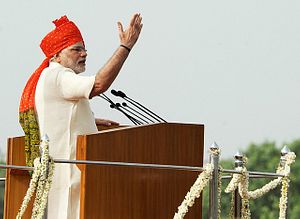A major terrorist attack in Awantipora area of Pulwama district in south Kashmir has killed dozens of Central Reserve Police Force (CRPF) personnel, and the casualties are likely to go up. But despite the severity of the attack and growing pressure for action, New Delhi’s choices are much more limited than they may initially appear.
The Pulwama terrorist attack is one of the worst in recent years. The death toll is still climbing, but recent reports indicated over 40 people had been killed. In the 2016 attack on an Indian Army base in Uri, 16 personnel had died. The 2001 attack on the Jammu and Kashmir state assembly in Srinagar had killed 38 people. For the CRPF in particular, this is the second worst attack in its history. The last time it suffered such casualties was in Dantewada when Maoists insurgents ambushed and killed 75 CRPF personnel in April 2010.
The CRPF is the largest of the central paramilitary forces that come under the Ministry of Home Affairs. It has been carrying out law and order as well as counterinsurgency duties in Jammu and Kashmir and India’s northeast for several decades. The CRPF is generally less well trained and less well armed than the Indian Army, but it is usually used to bolster local police forces around the country in various contingencies including for counterinsurgency duties.
Reacting to the attack, Prime Minister Narendra Modi tweeted, “Attack on CRPF personnel in Pulwama is despicable. I strongly condemn this dastardly attack. The sacrifices of our brave security personnel shall not go in vain. The entire nation stands shoulder to shoulder with the families of the brave martyrs.” Union Minister VK Singh responded by saying, “As a soldier and a citizen of India, my blood boils at the spineless and cowardly attacks. 18 brave hearts from the @crpfindia laid down their lives in #Pulwama. I salute their selfless sacrifice & promise that every drop of our soldier’s blood will be avenged. #JaiHind.”
These statements are understandable and fairly routine, and the government will be under great pressure to do something. One reason is the scale of the attack and the open claim of responsibility by Jaish-e-Mohammed (JeM), a Pakistan-based terrorist group. Another reason is that the Modi government claims to be tough on national security matters and its supporters will expect it to act forcefully. Moreover, India’s so-called surgical strikes in 2016 will lead to expectations that India will act this time also. Finally, national elections are due to take place in the next few months which adds domestic political pressure on the government.
On the other hand, India’s options to respond are fairly limited. On the diplomatic side, while we have seen Indian officials speak about isolating Pakistan and some steps may be taken in this direction, they are likely to have little substantive impact considering that the level of diplomatic intercourse with Pakistan is already quite minimal and no major negotiations or talks are underway. While India could downgrade diplomatic relations even further, it is unlikely that it could do very much to assuage the anger in the country.
India could also try to generate diplomatic pressure on Pakistan through its friends in the international community and through multilateral fora such as the United Nations. But these have so far proved of little value and they are unlikely to bear much fruit.
This attack also raises questions about the Modi government’s Wuhan initiative to smooth ties with China. Despite Modi’s efforts to mollify China, there is little indication that Beijing has stopped providing cover to Pakistan, especially on the Masood Azhar issue. In fact, any Indian effort to once again list JeM founder Masood Azhar as a global terrorist is likely to be blocked by China.
India’s military options are equally constrained. If past crises are any indication, it is unlikely that there are any well-planned and prepared contingency options that have been decided in consultation between the political leadership and the Indian military. Thus, any response will have to wait until plans are drawn up, forces prepared, and equipment deployed. This is likely to take time, possibly several weeks.
It is also unclear that the Indian military has sufficient superiority over Pakistani forces to even consider any full-scale military retaliation. The Indian military has been starved of funds in the last several years, with very little capital acquisition and significant weaknesses in critical areas. The Indian Air Force, for example, is down to about 30 squadrons and it will be years before India is able to field the full 42 squadrons that has been sanctioned for the Air Force.
It is also unclear that India will respond with a full-scale conventional assault as envisaged under the Cold Start doctrine. With elections looming, such a venture may be considered too risky. While it is possible that India could conduct a somewhat enhanced version of the 2016 surgical strikes, that may not be seen as sufficient.
The Modi government is thus likely to find itself facing a series of bad choices. But it has only itself to blame for the poor planning and preparation to meet a contingency that was easily predictable. The greatest danger is that under pressure to do something, Delhi will launch a military assault with inadequate forethought that will likely make the situation worse.

































